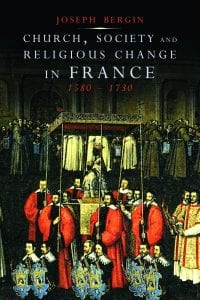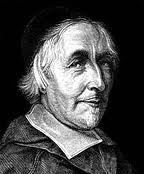 Church, Society, and Religious Change in France, 1580-1730 by Joseph Bergin
Church, Society, and Religious Change in France, 1580-1730 by Joseph Bergin
Yale University Press, 2009, 506 p
ISBN: 9780300150988
Winner of the 2010 Me du concours des antiquites de France given by the Academie des Inscriptions et Belles’Lettres in Paris
This readable and engaging book by an acclaimed historian is the only wide-ranging synthesis devoted to the French experience of religious change during the period after the wars of religion up to the early Enlightenment. Joseph Bergin provides a clear, up-to-date, and thorough account of the religious history of France in the context of social, institutional, and cultural developments during the so-called long seventeenth century.
Bergin argues that the French version of the Catholic Reformation showed a dynamism unrivaled elsewhere in Europe. The traumatic experiences of the wars of religion, the continuing search within France for heresy, and the challenge of Augustinian thought successively energized its attempts at religious change. Bergin highlights the continuing interaction of church and society and shows that while the French experience was clearly allied to its European context, its path was a distinctive one.
Joseph Bergin is professor of history at the University of Manchester, and a Fellow of the British Academy. His previous books include Cardinal Richelieu, The Making of the French Episcopate and Crown, Church and Episcopate under Louis XIV, all published by Yale.
Reviews:
An authoritative account of the French church in the ‘long seventeenth century’ that is both general and nuanced. We certainly need a book on this subject and Joseph Bergin is unquestionably the historian to write it.” – Nigel Aston, Leicester University
“Benefiting from a lifetime’s study, Joseph Bergin brilliantly succeeds in showing us how the French Catholic church was the product of a society that it, in turn, did so much to shape. The result is a remarkable recreation of a diverse religious society to which generations of individuals, clerics and laymen, found themselves committed by shared duty and devotion.” – Mark Greengrass, University of Sheffield
“Joseph Bergin’s outstanding synoptic study combines breadth of coverage and depth of understanding to brilliant effect. He brings out the astonishing scale of the Catholic reform movement in France, while offering an incisive analysis of its inner workings and ambiguities. This now becomes the indispensable book for everyone interested in seventeenth-century French Catholicism, and will also be invaluable to all serious students of early modern French and European history.” – Robin Briggs
“The word definitive is perhaps too often used in reviews, but Joseph Bergin’s new book on the French church in the long seventeenth century certainly qualifies. . . . Throughout the book, Bergin is careful in his judgments, meticulous in his use of a wide variety of evidence, and encyclopedic in his knowledge of the subject. . . . It is unlikely that we shall soon see a better work in any language on the French church in the seventeenth century.”-W. Gregory Monahan, American Historical Review
“Essential reading for anyone who wants to understand seventeenth-century France . . . a masterpiece.”–Michael Hayden, Canadian Journal of History
“Joe Bergin has built his reputation as the world’s leading authority on the early modern French church … He knows the church of the grand siècle from the inside, and in analyzing its structure and workings he has attained the stature … of a great historian. …This should now be the first port of call for anybody wishing to understand why and how this persistently perplexing phenomenon emerged as and when it did.” – William Doyle, French History
“[Bergin’s] new work Church, Society and Religious Change in France, 1580-1730 is a monumental study that only a scholar with his past achievements could contemplate undertaking … A focused and readable survey. There is no question that this book is an important and welcome addition to the field … This book is more than just a survey, it also provides a guide to where further research will transform our understanding of the French Church.” – Eric Nelson, Reviews in History
“The accessibility of a work of such scope makes it worth the the cover price alone. Moreover, in its crucial contributions to historical methodologies which force us to rethink a French “Catholic Reformation” which had fizzled out by 1660, makes this book an essential text for students and academics alike.” – Jenny Hillman, Journal of Early Modern History
“[A] remarkable work.”–Jacques M. Gres-Gayer, Catholic Historical Review



